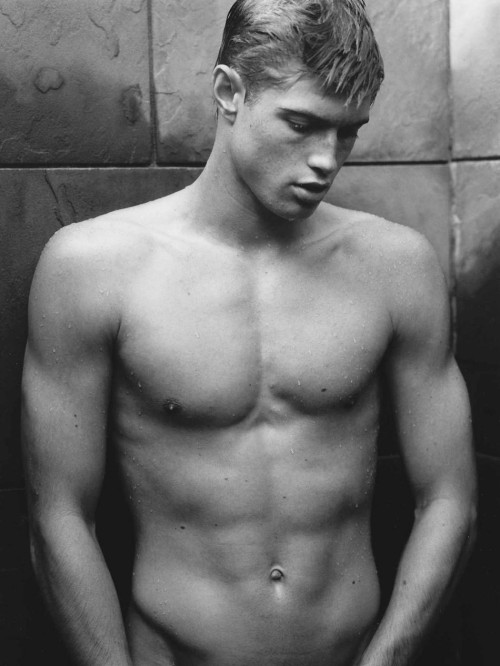Our Time's Up Too
Bruce Weber. Mario Testino. Terry Richardson. All world-renowned photographers. All accused of sexual assault and harassment.
From left to right, Bruce Weber, Mario Testino & Terry Richardson
With the recent claims against Testino and Weber by male models and set assistants, as well as the resurfacing of accusations against Richardson (accusations that were not listened to when they first arose), the fashion world is supposedly reeling. Condé Nast has suspended work with all three. Anna Wintour has released a statement expressing her dismay. Everyone is rapidly trying to get as far as they possibly can from the whole debacle.
Yet, those dreaded whisperings are already starting to seep through. The stories revealing that these figures were commonly known to be dangerous individuals. The same reports that are emerging from Hollywood all the way to Washington.
Ryan Locke for Gucci, shot by Mario Testino | Image Via
“Sexual harassment was a constant reality,” says Roman Barrett, an assistant to Mr. Testino in the late ’90s who said the photographer rubbed up against his leg with an erection and masturbated in front of him. “He misbehaved in hotel rooms, the backs of cars and on first-class flights,” he adds. “Then things would go back to normal, and that made you feel gaslighted.” “Everyone started making these jokes — they said he was notorious, and ‘tighten your belt,’” notes Ryan Locke, a model claiming Testino pinned him down in a bed during a nude shoot. “I saw him with his hands down people’s pants at least 10 times,” says Thomas Hargreave, a shoot producer who worked frequently with Mr. Testino between 2008 and 2016.
Rudi Dollmayer shot by Bruce Weber | Image Via
“The first thing I was told about Bruce was that he puts people in really precarious situations,” states Terron Wood, a model who shot several ad campaigns with Mr. Weber between 2007 and 2010. “It’s presented as an option, but it isn’t really,” Erin Williams, a female model on two of Mr. Weber’s campaigns for Abercrombie & Fitch, said of working nude. “The models that didn’t go nude were always cut on day two, and those who did would stay for additional shoot days. The boys who would socialize with Bruce after the shoots, alone in his hotel room, would get booked for longer with the carrot of a major campaign being dangled in front of them.” “They even have a term for it: ‘He’s going to get Brucified,’” adds Rudi Dollmayer, a Swedish model who shot with Mr. Weber three times.
Jessie English, a female photographer who spent three years as an assistant primarily to male photographers before going out on her own, aptly describes the attitude she saw on fashion shoots this way:
““If I need to touch you between your legs or grab your breasts so you get the right look on your face, that’s just the way it is.””
And that right there is a large part of the reason that it took so long for these accounts to be given the attention that they so desperastely deserved. For these people speaking their truths to be truly listened, and believed. These men were very good at their job not despite their horrendous behavior, but because of it. The intimidating, and at times dangerous, positions they put the people around them in created incredibly powerful photographs. Great art often stems from making the viewer uncomfortable, and in the modelling world if the muse is uncomfortable too there lies a potential to capture a striking image. The kind of image that can propel a photographer to the heights that these men reached. The very pinnacle of success.
The Royal Family shot by Mario Testino | Image Via
I’m not saying all this to in any way justify what these men have done. Quite the opposite, I am pointing it out to underline both how despicable their actions are, and also the role that we, as and audience, have played in all this.
Our times up for acting as if we are somehow detached from the revelations of widespread sexual assault across the globe, and in the fashion industry in particular. We are complicit.
When claims first surfaced against Terry Richardson of sexual assault back in 2001, little was done. Vogue kept hiring him. Fashion houses kept requesting him. And we kept admiring his photographs. He worked in an industry where the models face immense competition, a huge power imbalance, and no unions with little to no regulations. The perfect industry for a sexual predator to flourish. And we did nothing to stop him.
Terry Richardson with Miranda Kerr | Image Via
Now, the more recent allegations have gained more traction. The industry is listening and, for the large part, believing. But they’re not reflecting. We’re not reflecting. We need to reflect on the way the fashion world is constructed. We need to reflect on the rights that models and staff are granted. And we need to reflect on our own standards. Art cannot, and need not, necessitate exploitation in any form. Time's up, and we ought to be better.













